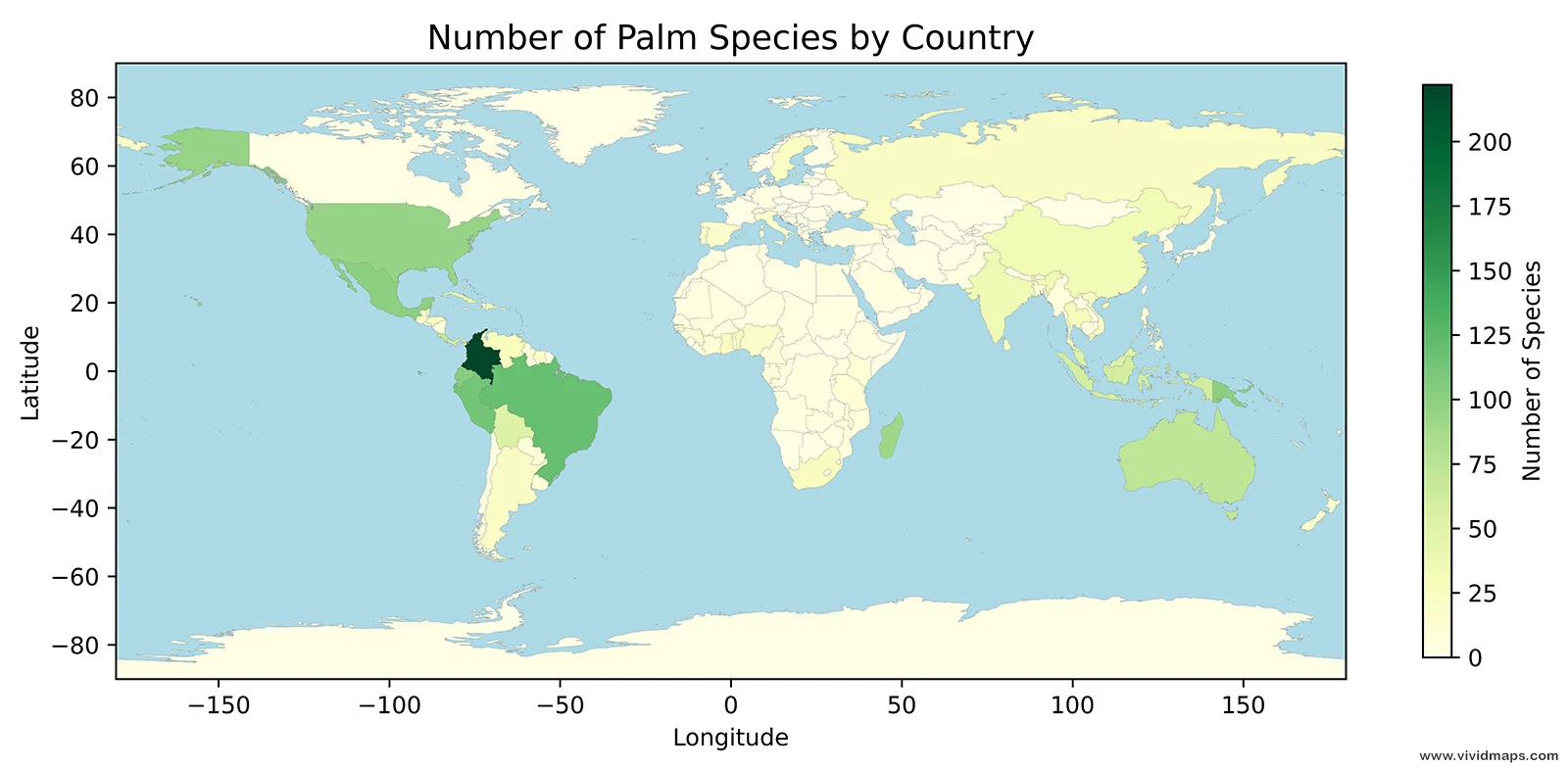Palms are perennial flowering plants of the Arecaceae family. Nowadays, exists 181 genera with about 2.6 thousand palm species. Most palm trees are distinguished by their broad, compound, evergreen leaves at the top of an unbranched trunk. Palms emerged about 80 million years ago and spread right across the planet. Competition from more recent trees has disposed of palms from many of the ecological niches they once occupied, but they are still predominant in warmer climates. Palms succeed mainly in moist and hot climates of the subtropics and tropics. Their diversity is exceptionally high in wet, lowland forests (2/3 of palm species inhabit humid forests). South America, the Caribbean, South Pacific, and Asia regions have a high concentration of palm species. Only 130 palm species naturally grow outside the tropics, mainly in humid subtropical climates, on hillsides in southern Asia, and along the rimlands of the Mediterranean Sea.
In the northern hemisphere, the northernmost native palm is Chamaerops humilis, which reaches 44°N latitude along the seaside of Liguria in Italy. In the southern hemisphere, the southernmost palm is the Rhopalostylis sapida, which goes 44°S on the Chatham Islands with an oceanic climate.
Alex Egoshin from vividmaps.com analyzes 716583 records on the distribution of palm trees from the Global Biodiversity Information Facility (GBIF) website and found that Colombia has more significant tree species than any other nation.
This tropical nation’s extraordinary biodiversity is likely because of its sweet spot presence in the conjunction of North and South America, the Pacific, and the Caribbean, along with ranging altitudinal zones.
The interactive map you can find here.
Top 10 most widespread palm species by the number of countries in which they occur
#1. The coconut tree (Cocos nucifera) - 121 countries
#2. Date palm (Phoenix dactylifera) - 71 countries
#3. Oil palm (Elaeis guineensis) - 54 countries
#4. Manila palm (Adonidia merrillii) - 54 countries
#5. Golden cane palm (Dypsis lutescens) - 49 countries
#6. Senegal date palm or the wild date palm (Phoenix reclinata) - 46 countries
#7. Mexican washingtonia, or skyduster (Washingtonia robusta) - 44 countries
#8. The Canary Islands date palm (Phoenix canariensis) - 40 countries
#9. The Chinese windmill palm (Trachycarpus fortunei) - 39 countries
#10. The Chinese fan palm or fountain palm (Livistona chinensis) - 36 countries.
Top 10 palm species by the number of occurrence records
#1. Patwa (Oenocarpus batata) - 52802 occurrences
#2. Poktamui (Lepidocaryum tenue) - 35993 occurrences
#3. Geonoma macrostachys - 27996 occurrences
#4. Mountain cabbage palm (Euterpe precatoria) - 24993 occurrences
#5. Rootspine palm (Cryosophila stauracantha) - 22277 occurrences
#6. Geonoma deversa - 21244 occurrences
#7. Iriarte deltoidea - 20490 occurrences
#8. The walking palm (Socratea exorrhiza) - 19913 occurrences
#9. Prestoea acuminata - 17743 occurrences
#10 Urucuri palm (Attalea phalerata) - 14934 occurrences

This post may contain affiliate links. As an Amazon Associate, I earn from qualifying purchases.
Comments
Post a Comment